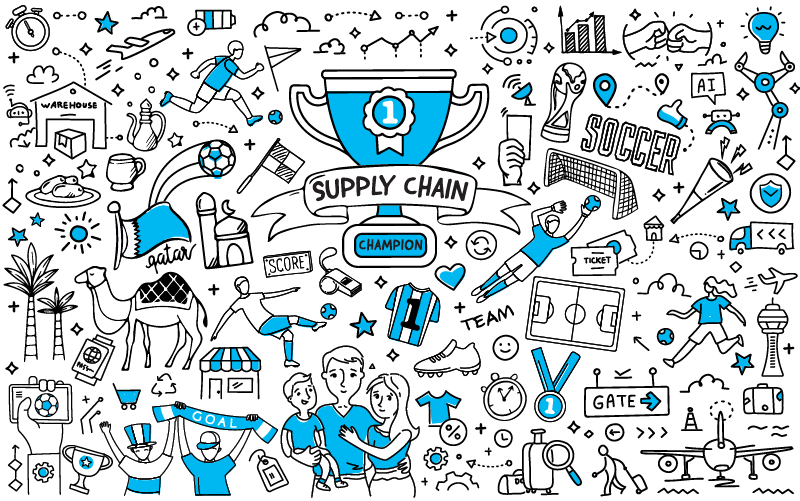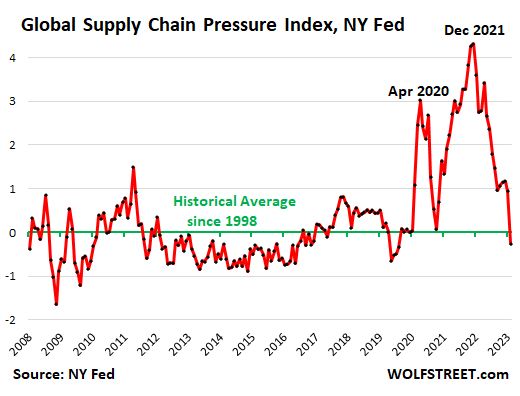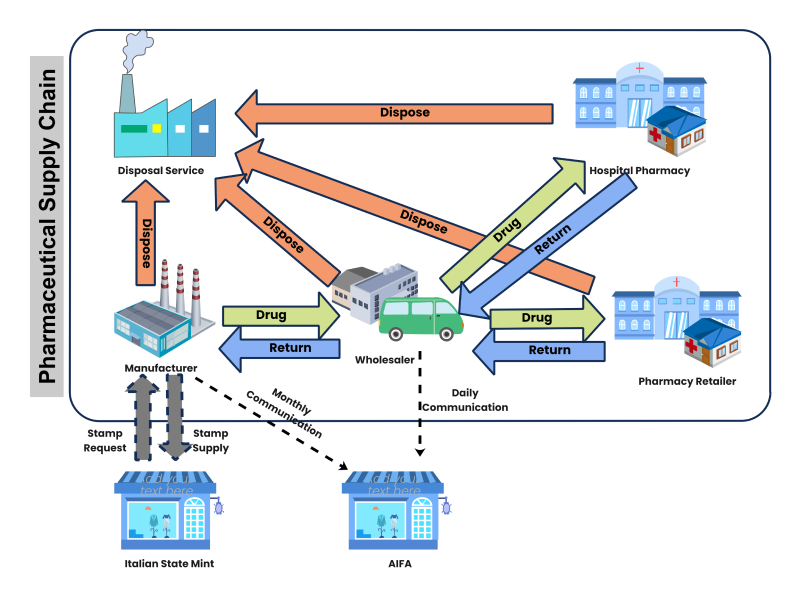How does the Efficient Global Cup Stock Supply Chain Work?
Key Players in the Global Cup Stock Supply Chain
The global cup stock supply chain is a complex network of manufacturers, suppliers, distributors, and retailers that work together to ensure the availability of cup stocks worldwide. Each player has a crucial role in this chain, contributing to the seamless flow of products from production to consumption.
Who are the key manufacturers in the global cup stock supply chain?
Manufacturers play a vital role in the cup stock supply chain as they are responsible for producing the raw materials needed to create cups. Some of the key manufacturers in the global cup stock supply chain include:
- International Paper: As one of the largest manufacturers of paper-based packaging, International Paper produces cup stock materials that are used in the production of cups.
- Huhtamaki: Huhtamaki is another major player in the cup stock manufacturing industry. They produce a wide range of cup stock materials that meet the needs of various cup manufacturers around the world.
- Georgia-Pacific: Georgia-Pacific is known for its innovative cup stock manufacturing processes and produces high-quality cup stock materials that are widely used in the industry.
- Dart Container Corporation: Dart Container Corporation specializes in the production of foam-based cup stock materials, which are utilized in the manufacturing of foam cups.
These manufacturers use advanced technologies and sustainable practices to produce cup stock materials that meet the demands of the industry.
How do suppliers contribute to the supply chain of cup stocks?
Suppliers play a crucial role in the cup stock supply chain by providing the necessary raw materials and components to the manufacturers. They ensure a steady supply of materials, such as paper pulp, adhesive, and coatings, which are essential for the production of cup stocks. Suppliers work closely with manufacturers to meet their specific requirements and maintain quality standards. By establishing strong relationships with their suppliers, manufacturers can optimize their production processes and ensure the timely delivery of cup stock materials.
…
Market Insights
| Market Insight | Description |
|---|---|
| Growing Demand for Sustainable Solutions | There is a rising demand for cups made from sustainable materials such as biodegradable or compostable options. |
| Technological Advancements | The cup stock supply chain has been significantly influenced by automation, digitalization, and artificial intelligence (AI) and machine learning (ML). |
| Changing Consumer Behavior | Changes in consumer preferences and the rise of e-commerce have impacted the packaging solutions offered by manufacturers and retailers. |
Case Studies
Eco-Cup Solutions (GreenPack)
| Overview | Solution | Results |
|---|---|---|
| GreenPack | Developed a unique and biodegradable cup stock material made from plant-based fibers. | Experienced significant growth in customer base and market share. |
Streamlined Distribution (Global Distributors)
| Overview | Solution | Results |
|---|---|---|
| Global Distributors | Implemented advanced supply chain management systems and improved relationships with manufacturers and suppliers. | Improved efficiency, reduced lead times, and enhanced customer satisfaction. |
Statistics
- According to Grand View Research, the global cup stock market size was valued at USD 5.6 billion in 2020 and is projected to reach USD 8.4 billion by 2028, growing at a CAGR of 5.6% during the forecast period.
- The Asia Pacific region dominated the cup stock market with a market share of over 35% in 2020, according to Technavio.
- The 2022 FIFA World Cup held in Qatar from November 20 to December 18 is expected to witness a surge in the demand for cups and packaging materials.
- The coffee supply chain, a significant consumer of cup stock materials, involves multiple stages, including growing, processing, shipping, roasting, packing, and retailing.
In conclusion, the global cup stock supply chain is influenced by various market insights, including the growing demand for sustainable solutions, technological advancements, and changing consumer behavior. The provided case studies highlight successful strategies employed by companies to overcome challenges and thrive in the industry. Furthermore, statistics emphasize the market’s size, regional dominance, and the impact of major events like the FIFA World Cup on the demand for cup stock materials. As the industry continues to evolve, it is crucial for stakeholders to stay ahead of market trends and adopt sustainable practices to ensure a resilient and efficient global cup stock supply chain.
Supply Chain Processes and Challenges
The global cup stock supply chain involves a series of interconnected processes that ensure the smooth flow of cup stocks from manufacturers to retailers. These processes include procurement, production, distribution, and retailing. However, there are several challenges that arise in the cup stock supply chain, ranging from logistics issues to sustainability concerns. In this section, we will explore the main supply chain processes in the global cup stock industry, discuss the common challenges faced in the cup stock supply chain, examine the current trends shaping the industry, and explore how sustainability practices are integrated into the cup stock supply chain.
Main Supply Chain Processes in the Global Cup Stock Industry
The main supply chain processes in the global cup stock industry can be divided into four stages: procurement, production, distribution, and retailing.
Procurement:
| Process | Description |
|---|---|
| Sourcing and purchasing of raw materials | Manufacturers establish relationships with reliable suppliers to ensure a steady supply of high-quality materials. |
| Production | The production process transforms the raw materials into cup stocks. Manufacturers use specialized machinery to shape and form the paperboard into cups, while applying coatings and printing designs as required. |
Distribution : Distribution involves the transportation of the cup stocks from the manufacturing facilities to various distribution centers or directly to retailers. This process may involve logistics partners, such as shipping companies or third-party logistics providers, to manage the efficient movement of goods across different regions.
Retailing : Retailing refers to the final stage of the supply chain where the cup stocks are sold to consumers. This can take place in various settings, including coffee shops, fast food chains, convenience stores, and online marketplaces. Retailers play a crucial role in ensuring the availability of cup stocks to meet consumer demand.
Common Challenges Faced in the Cup Stock Supply Chain
Despite its importance, the cup stock supply chain faces several challenges that can disrupt the smooth flow of products. These challenges include:
| Challenge | Description |
|---|---|
| Supply Chain Disruptions | Disruptions in the supply chain can occur due to various reasons such as natural disasters, labor strikes, or global events like the COVID-19 pandemic. |
| Inventory Management | Balancing inventory levels is crucial to avoid stockouts or excessive inventory. Poor inventory management can result in either shortage of cup stocks leading to dissatisfied customers or overstocking which ties up capital. |
| Forecasting | Accurate demand forecasting is essential to ensure that cup stocks are produced in the right quantities to meet customer demand. Inaccurate forecasts can lead to excess inventory or stockouts.
| Sustainability | With increasing environmental concerns, sustainability has become a significant challenge in the cup stock supply chain. The industry is working towards reducing the use of non-recyclable materials and adopting more sustainable practices.
| Cost Control | Ensuring cost control throughout the supply chain is important to maintain profitability. Rising costs of raw materials, transportation, and labor can impact the overall cost structure. |
Current Trends Shaping the Cup Stock Supply Chain Industry
Several trends are shaping the cup stock supply chain industry. These trends include:
| Trend | Description |
|---|---|
| Digitalization | The digitalization of the supply chain is enabling better visibility, real-time tracking, and data analytics to optimize operations and enhance efficiency. Technologies like advanced planning systems, blockchain, and IoT sensors are being utilized to streamline processes. |
| E-commerce | The growth of e-commerce platforms has impacted the cup stock supply chain, as companies need to fulfill both offline and online orders efficiently. This trend has led to the emergence of omnichannel distribution networks and the need for seamless integration between physical and online sales channels. |
| Customization | Increasing consumer demand for personalized products has pushed cup stock manufacturers to offer customization options. This trend requires agile supply chain processes to accommodate varying customer preferences without sacrificing efficiency. |
| Collaboration and Partnerships | Collaborations and partnerships between various stakeholders in the supply chain, including manufacturers, suppliers, distributors, and retailers, are becoming more common. This collaboration helps in optimizing processes, reducing costs, and improving overall supply chain performance.
Integration of Sustainability Practices into the Cup Stock Supply Chain
Sustainability practices are being integrated into the cup stock supply chain to reduce the industry’s overall environmental footprint. Manufacturers are exploring alternative materials that are biodegradable, compostable, or made from recycled sources. Additionally, efforts are being made to optimize packaging designs to reduce material usage and improve recyclability.
The use of renewable energy sources in manufacturing facilities, such as solar or wind power, is becoming more prevalent. Companies are also investing in waste management systems to reduce waste generation and promote recycling.
Furthermore, supply chain partners are adopting sustainable transportation methods, such as electric or hybrid vehicles, to reduce carbon emissions. They are also looking to optimize transportation routes and consolidate shipments to minimize fuel consumption.
In conclusion, the global cup stock supply chain involves a series of processes that ensure the smooth flow of cup stocks from manufacturers to retailers. This industry faces various challenges, including supply chain disruptions, inventory management issues, forecasting accuracy, sustainability concerns, and cost control. However, the industry is adapting to current trends such as digitalization, e-commerce, customization, and collaboration. Moreover, sustainability practices are being integrated into the cup stock supply chain to reduce the environmental impact of the industry and meet the increasing consumer demand for eco-friendly products. By embracing these trends and addressing challenges, the cup stock supply chain can continue to evolve and meet the needs of consumers worldwide.
Market Insights and Case Studies
The global cup stock supply chain is a complex and dynamic industry that plays a crucial role in ensuring the availability of cups for various purposes, including hot and cold beverages, food packaging, and more. In this section, we will explore some market insights related to the global cup stock supply chain, provide case studies that illustrate the industry’s dynamics, and showcase statistics that highlight the complexities of this supply chain globally.
Market Insights
- Growing Demand for Sustainable Solutions: As consumers become more environmentally conscious, there is a rising demand for cups made from sustainable materials such as biodegradable or compostable options. This shift in consumer preference has driven manufacturers to develop innovative solutions to meet the demand for eco-friendly cup stock materials.
- Technological Advancements: The cup stock supply chain has been significantly influenced by technological advancements. Manufacturers are leveraging automation and digitalization to improve efficiency in production processes, reduce waste, and optimize inventory management. Furthermore, the integration of artificial intelligence (AI) and machine learning (ML) allows for real-time data gathering and decision-making in supply chain management, enhancing overall operations.
- Changing Consumer Behavior: The evolving lifestyle and preferences of consumers have a direct impact on the cup stock supply chain industry. With the increasing popularity of on-the-go beverages and the rise in e-commerce, manufacturers and retailers need to adapt to changing consumer behavior and provide convenient and sustainable packaging solutions.
Case Studies
Eco-Cup Solutions
Company Name: GreenPack
Overview: GreenPack is a leading manufacturer of sustainable cup stock materials. They provide eco-friendly packaging solutions for various industries, including the food and beverage sector.
Challenge: The company faced the challenge of meeting the increasing demand for sustainable cup stock materials while maintaining high production standards and competitive pricing.
Solution: GreenPack invested in research and development to create a unique and innovative cup stock material made from plant-based fibers. This material is biodegradable, compostable, and meets all industry standards for food-grade packaging. By offering a sustainable alternative, GreenPack was able to cater to the changing consumer preferences and secure partnerships with several major beverage companies.
Results: Through their commitment to sustainability, GreenPack experienced significant growth in their customer base and market share. Their success inspired other manufacturers to follow suit and develop their own eco-friendly cup stock materials, driving the overall shift towards sustainability in the industry.
Streamlined Distribution
Company Name: Global Distributors
Overview: Global Distributors is a prominent player in the cup stock supply chain. They specialize in the distribution of cup stock materials to manufacturers and retailers worldwide.
Challenge: The company encountered challenges in optimizing their distribution network to meet the increasing global demand for cup stock materials. They needed to ensure timely deliveries, minimize logistics costs, and provide efficient customer service.
Solution: Global Distributors implemented advanced supply chain management systems to streamline their operations. They utilized real-time data analytics to forecast demand, optimize inventory levels, and improve delivery schedules. Additionally, they strengthened their relationships with manufacturers and suppliers, ensuring a steady and reliable supply of cup stock materials.
Results: The implementation of these strategies resulted in improved efficiency, reduced lead times, and enhanced customer satisfaction. Global Distributors gained a competitive edge in the market, attracting new customers and expanding their global reach.
Statistics
- According to a market research report by Grand View Research, the global cup stock market size was valued at USD 5.6 billion in 2020 and is projected to reach USD 8.4 billion by 2028, growing at a CAGR of 5.6% during the forecast period.
- A study by Technavio revealed that the Asia Pacific region dominated the cup stock market with a market share of over 35% in 2020. The increasing consumption of hot and cold beverages, along with the growth of the foodservice industry, contributes to the region’s market dominance.
- The 2022 FIFA World Cup held in Qatar from November 20 to December 18 is expected to witness a surge in the demand for cups and packaging materials. With millions of spectators attending the event, cup stock manufacturers and suppliers need to efficiently manage the supply chain to meet the unique logistics challenge posed by the influx of fans.
- The coffee supply chain, a significant consumer of cup stock materials, involves multiple stages, including growing, processing, shipping, roasting, packing, and retailing. Each link in the coffee supply chain plays a crucial role in delivering coffee to consumers efficiently and responsibly.
In conclusion, the global cup stock supply chain is influenced by various market insights, including the growing demand for sustainable solutions, technological advancements, and changing consumer behavior. The provided case studies highlight successful strategies employed by companies to overcome challenges and thrive in the industry. Furthermore, statistics emphasize the market’s size, regional dominance, and the impact of major events like the FIFA World Cup on the demand for cup stock materials. As the industry continues to evolve, it is crucial for stakeholders to stay ahead of market trends and adopt sustainable practices to ensure a resilient and efficient global cup stock supply chain.
FAQs about the Global Cup Stock Supply Chain
What is the role of manufacturers in the global cup stock supply chain?
To understand the role of manufacturers in the global cup stock supply chain, we look at key players like International Paper, Huhtamaki, Georgia-Pacific, and Dart Container Corporation, who produce raw materials for cup production.
How do suppliers contribute to the supply chain of cup stocks?
Suppliers play a crucial role in the cup stock supply chain by providing raw materials like paper pulp and coatings essential for cup production, ensuring a steady supply for manufacturers.
What is the role of distributors in the distribution of cup stocks worldwide?
Distributors act as intermediaries between manufacturers and retailers, efficiently transporting cup stock materials globally, managing inventory, reducing lead times, and ensuring product availability.
How do retailers impact the global cup stock supply chain?
Retailers are the final link, connecting manufacturers and consumers by offering various cup stock products, collaborating with distributors to ensure product availability, and promoting sustainability in the supply chain.
In conclusion, we explored the key players and processes in the global cup stock supply chain. Manufacturers, suppliers, distributors, and retailers all play crucial roles. Despite challenges, sustainability practices and evolving trends are shaping the industry. Market insights, case studies, and statistics offer a deeper understanding of this complex ecosystem. Embracing these insights will be vital for navigating the ever-changing cup stock supply chain landscape.





